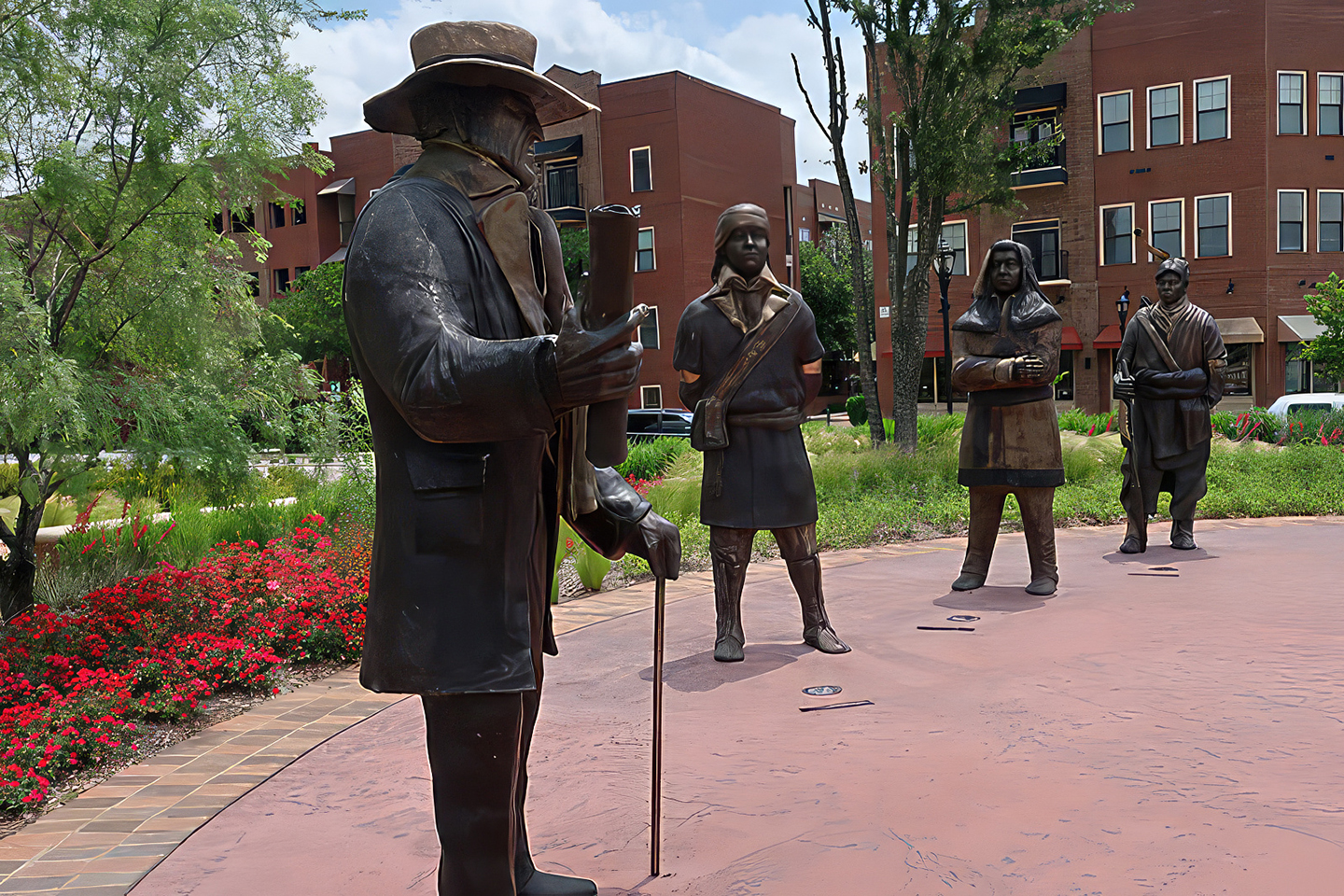Several Tribes Sign Bird's Fort Treaty, but Not Comanches
Fort Worth Star-Telegram, March 19, 2000

By Joyce Gibson Roach
Sixth in a series of early history of Northeast Tarrant County before the founding of Fort Worth
At about the same time that Snively's contingent tried to intercept Mexican gold trains, failed and used Bird's Fort to disband their activities, Sam Houston, then serving his second term as president, was trying to repair damages of Lamar's term. In addition to trouble caused by Lamar's harsh policies with the tribes of North Central Texas, the republic was deep in debt and without much revenue.
Houston set about first trying to restore relationships with the various tribes by meeting with them and establishing trading posts to furnish goods and supplies.
The last time that the site known as Bird's Fort would be used was in summer 1843 when state and Indian representatives were to come together to sign a treaty that would completely remove the various tribes from the Eastern Cross Timbers.
As early as 1841, Houston called for a council to be at the Waco village on the Brazos River. The occasion of meeting was to serve as an exchange of white captives for tribal captives and was scheduled for Oct. 26, 1842. Because of floods and heavy rains, the meeting never occurred.
The meeting was rescheduled for summer 1843. The Comanches were not inclined to show up. They were smarting over the loss and betrayal at the Council House Fight in San Antonio when 30 members of their tribe had been killed in 1841. For that reason, Joseph C. Eldridge, superintendent of Indian Affairs, and a contingent of agents, interpreters and traders made a trip to far northwestern Texas to try and persuade the Comanches to attend the Bird's Fort gathering.
In the meantime, Houston himself went to Bird's Fort, which was described as "swampy." After spending several days there, Houston lost his temper—"withdrew in a rage"—and went to higher ground at Grapevine Springs where he stayed for about a month.
An Englishman, identified only as E. Parkinson, kept a diary of the time and noted "there were some fine though rather monotonous days, only relieved by finding a bee tree or killing our beeves." Realizing that the Comanches weren't coming, Houston decided to have a council with those in attendance. He left General Tarrant and General George Terrell to deal with the Comanches when and if they arrived.
Houston's dress for the occasion is noteworthy. "Donned in a purple velvet suit, with a huge Bowie knife thrust in his belt, and a folded Indian blanket draped over one shoulder to proclaim his brotherhood with the red men, Houston eloquently promised the chiefs that a favorable treaty line would be drawn beyond which the Indians could live unmolested by white men." Then he left to return to Washington on the Brazos.
Those who did sign the treaty included Delaware, Chickasaw, Waco, Tawakoni, Kichai, Caddo, Anadarko, lonie, Biloti and Cherokce. The paper to which they affixed their marks was known as The Bird's Fort Treaty, and the territorial line was to run from an area north of what would become Fort Worth, westward to Menard on the San Saba River and from there to San Antonio.
During the course of describing the events of what went on at, around and near Bird's Fort, very little has been said about what happened to the lake that came to be called Calloway's Lake and nothing about how matters stand today. Little of the lake is left.* There is nothing left of Bird's Fort.
A historical marker once stood at the site just east off Texas 157, but it is no longer there. No one seems to know what happened to it.** The hill that led down to the lake and stockade has been cut down perhaps 15 feet because gravel was available. The Trinity River, which flooded the highway for many years and caused difficulty, has been contained;*** the land on the west of Texas 157 has been a landfill area.
About all that is left of a place once described as having "the healthiest country that I ever saw in my life" is Calloway's cemetery.**** An old fashioned tabernacle—cedar posts holding up a roof but open on all sides—is there, too. The site at Grapevine Springs in Coppell has been beautifully preserved and carefully tended.
For many years, the site of Bird's Fort was used by the Arlington Sportsman's Club. Over the years, the property changed hands and was entangled in legal battles over ownership.
*Factual error: The distinctively-shaped Calloway Lake exists in its entirety at the former site of Bird's Fort, although today stagnant and largely obscured by surrounding timbers and housing.
**Factual error: The original historical marker, placed at the site of Bird's Fort by the State of Texas in 1936, is in the possession of the Viridian developers as of this writing. Having suffered considerable damage by vandalism during the years the property was essentially untended, the marker awaits restoration and replacement at or near its original site.
***Factual error: No engineering was done to "contain" the Trinity River near Highway 157 (Collins Street); rather, the highway itself was realigned and raised out of the river's flood plain.
****Factual error: Calloway's Cemetery, while historically significant in its own right, is not part of the tract of land where the site of Bird's Fort lies, nor is its history connected to that of Bird's Fort.

